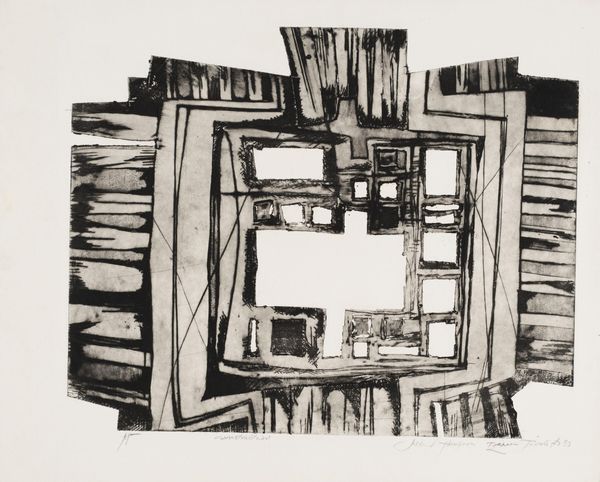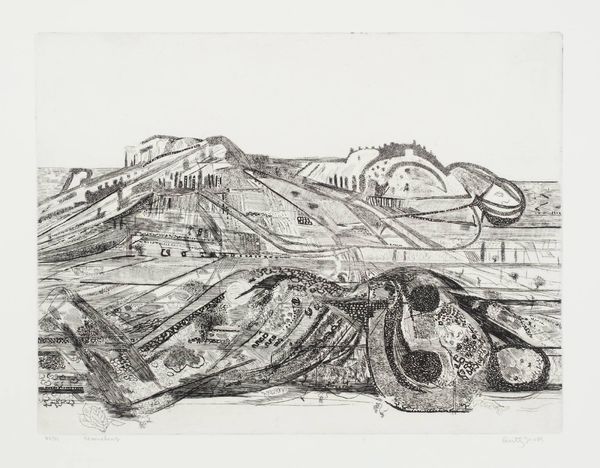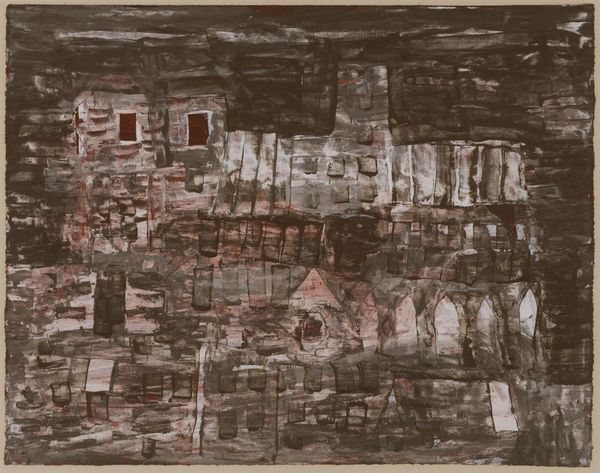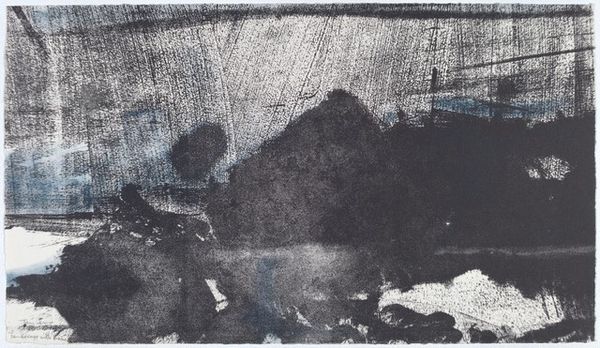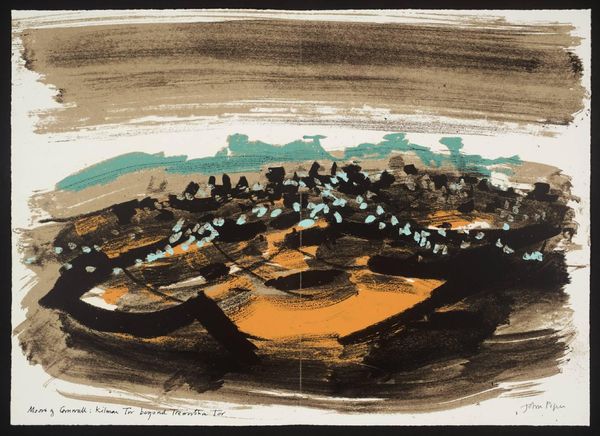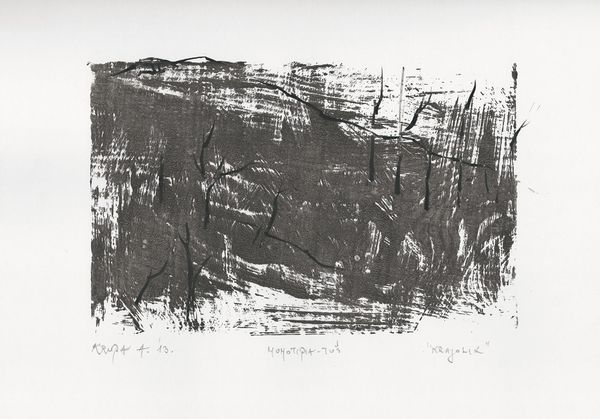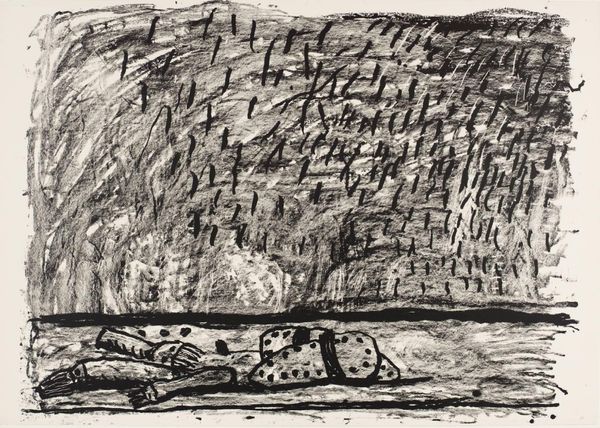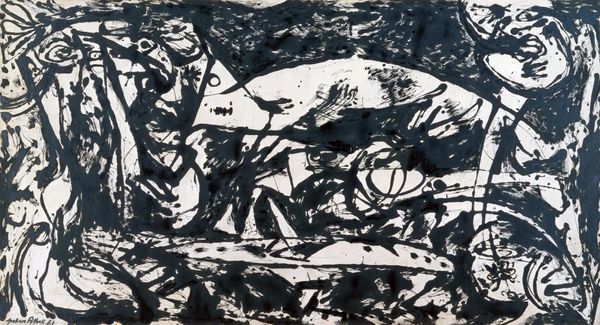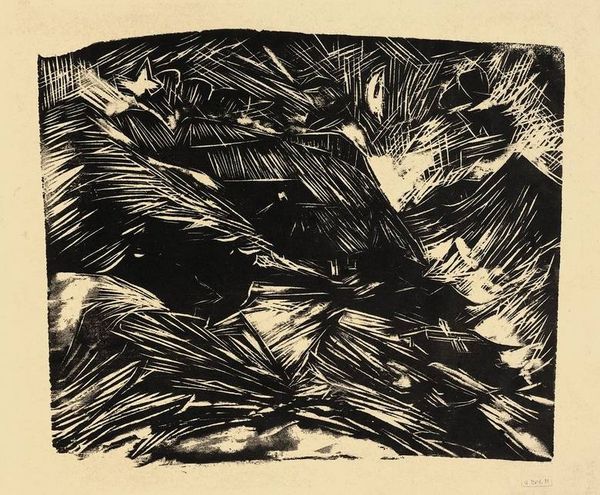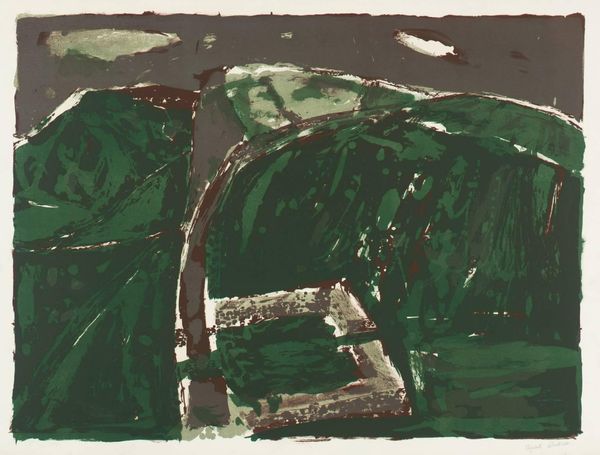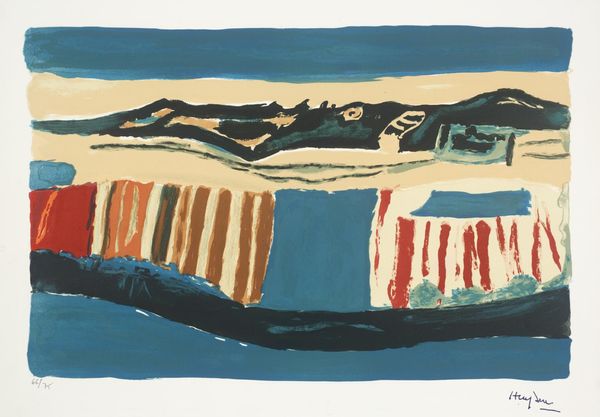
drawing, print, charcoal
#
drawing
# print
#
landscape
#
charcoal drawing
#
matter-painting
#
charcoal
#
modernism
#
realism
Dimensions: image: 335 x 495 mm sheet: 405 x 583 mm
Copyright: National Gallery of Art: CC0 1.0
Curator: Welcome. Before us hangs Chet Harmon La More’s "Coal Landscape," a charcoal drawing likely created between 1937 and 1939. Editor: My initial reaction? This feels…chaotic. Disjointed forms scattered across the page. The monochromatic palette adds to the starkness. There’s very little that’s comforting here. Curator: That chaotic feel might reflect the realities of the coal-mining regions La More depicted. During the Depression era, these communities faced immense social and economic upheaval. The fractured composition echoes the fractured lives of the workers. Editor: Interesting take. I'm drawn more to the play of light and shadow, the dramatic contrast. The textures are so rich, built up with confident strokes of charcoal, almost sculptural in their effect. It's about form, more than content for me, in this reading. Curator: I wouldn’t dismiss content entirely! La More exhibited frequently in politically engaged spaces. It’s vital to consider the cultural narratives he wanted to explore. Was this landscape meant to expose, critique, or perhaps even celebrate the industry, and to what audience? Editor: Perhaps the light and shadow act as a metaphor then? The intense black juxtaposed against the unyielding white spaces – an emotional response by the artist, rather than strict documentary. This reading adds weight, regardless of the culture's response at the time. Curator: It makes you wonder about the intended meaning embedded by La More in such intense contrasts and desolate scenes, whether aimed as societal critique, individual emotion, or an artful landscape, considering this matter-painting approach in terms of cultural context becomes relevant, I agree. Editor: Agreed. I’m now seeing those contrasting blacks and whites less as abstraction and more as an anguished reaction to difficult realities. Curator: Ultimately, this landscape pulls us between form and function and challenges us to examine it beyond purely visual pleasure, even despite its compelling textural quality. Editor: A final thought, despite the initial feeling of fragmentation, there is, without a doubt, a cohesive vision tying these contrasting spaces into a singular feeling: displacement.
Comments
No comments
Be the first to comment and join the conversation on the ultimate creative platform.
